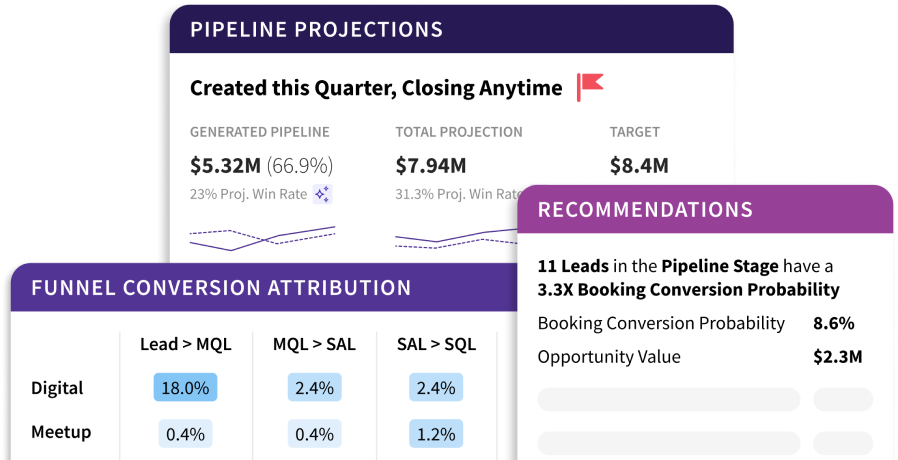
How does multi-touch attribution handle dark-funnel leads? How many touches can multi-touch attribution count? What if the order of engagement matters for multi-touch attribution? These are only a few questions commonly asked around multi-touch attribution. This may be why only 31% of marketers say they can measure ROI accurately using multi-touch attribution.
Challenges of Marketing Attribution
Online and Offline Behavior
Attribution systems are largely built around digital and online touchpoints in a buyer's journey. However, they rarely account for “dark social,” offline events or outbound efforts. Efforts outside of the digital realm can be more difficult to track and measure than online activities. We’ll discuss this more in our next challenge.
One common frustration of many marketers is that marketing attribution models often over-attribute to high-cost channels such as paid search and under-attribute to organic and social channels. With the rise of Slack Communities, more conversations are occurring away from the brand– and in areas they can track– and attribute.
Incomplete Data
Marketing attribution relies heavily on accurate and complete data about customer interactions with a company's various marketing channels. However, there are certain limitations to the data that can be collected and analyzed, particularly for offline activities.
In addition, online channels limit the data collected and analyzed through online channels. For example, with the increasing focus on data privacy and security, many customers opt out of data collection and cookie consent. This limits the amount of information collected and used for attribution.
As a result, even with the most immaculate of databases, there may still be missing information that affects marketing attribution accuracy and reliability. Marketers need to be aware of these limitations and find ways to account for them in their attribution models. This will ensure they get a complete picture of their marketing efforts and impact on customer behavior.
External Factors
Marketing attribution systems typically rely on data captured within the company's internal systems, such as website analytics, customer relationship management (CRM) software, and marketing automation platforms. However, there are external factors that can impact a company's marketing performance and are not captured in attribution systems.
Competitive activity is another external factor that impacts marketing performance. If a competitor launches its own product or marketing campaign, it may draw attention away from a company's own marketing efforts, leading to a decline in performance. Attribution systems may not account for these external factors, which can make it difficult to accurately measure marketing campaigns' impact.
Fluctuations in economic conditions can also impact marketing performance. For example, during times of economic downturn, customers may be more hesitant to make purchases, leading to sales declines. Attribution systems may not capture these macroeconomic factors, which can make it difficult to accurately measure marketing campaigns' impact over time.
Historically Facing
Marketing attribution is a valuable tool for evaluating past marketing campaigns and identifying which tactics and channels have generated leads and sales. However, attribution is limited in that it only looks at what has already occurred, which may not always indicate future success. Marketing teams need access to future-looking insights that can help them make informed decisions about their next moves and how much to spend.
By focusing solely on past performance, attribution may not provide the full picture of what drives leads and sales. It may not take into account changing market conditions, changing competitors, or other external factors that could impact future success. Therefore, marketing teams should complement their attribution data with other sources of information, such as market research, competitive analysis, and industry trends. This will enable them to gain a more holistic understanding of their pipeline generation efforts.
With this broader perspective, marketing teams can better predict future pipeline generation and optimize marketing spend accordingly. They can make more informed decisions about which channels and tactics to invest in. In addition, they can identify areas for improvement in their marketing processes to increase efficiency and effectiveness.
Ultimately, by combining attribution data with future-looking insights, marketing teams can generate more pipeline in a consistent, predictable, and scalable way, leading to greater business growth and success.
41% of marketers say inaccurate attribution is their biggest pain point in measuring ROI. This may be due to first-touch vs last-touch, weighting issues, lack of data or the fact that the past has passed– and the attribution of what worked doesn't work anymore.






